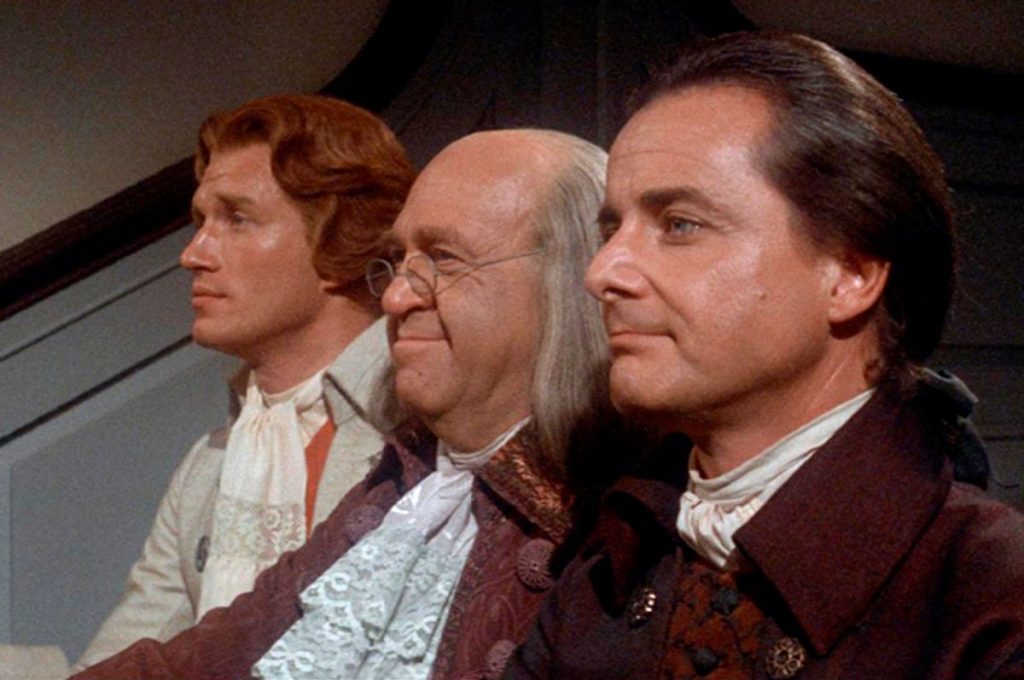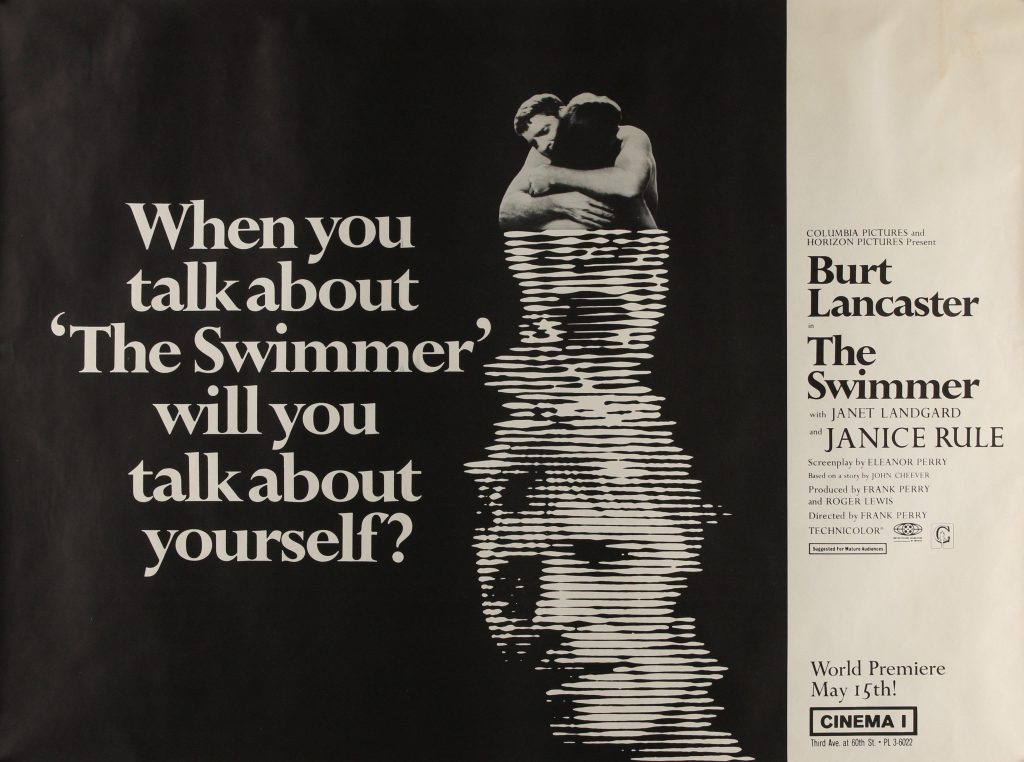Many will remember that very specific moment: a Tuesday morning, in the middle of winter perhaps, nothing but classwork ahead of you. But then, a reprieve – a big, bulky cart, carrying an even heavier television set and a VCR player, comes rolling into the classroom. You have seen the movie the substitute teacher is about to play before but you do not care. For the next fifty minutes, your mind gets to go somewhere else, at least before the bell rings and you are off to the next class.
That very specific mode of viewing carries with it a kind of nostalgia that never goes away. Even as we grow older, our fondness for the movies that were there for us when we needed them most endures. Which do you remember? Perhaps the 1974 adaptation of The Great Gatsby with Robert Redford and Mia Farrow? Or a tune from Schoolhouse Rock?
Another schoolroom classic is 1776, the 1972 film directed by Peter Hunt. Adapted from the Tony-winning musical by Sherman Edwards, the film’s plot will be familiar to anyone with a passing knowledge of U.S. history. Massachusetts delegate John Adams (terrifically played, here and on stage, by William Daniels), must convince his fellow delegates to support a resolution declaring the American Colonies’ independence from England. His allies include Benjamin Franklin (Howard Da Silva), Thomas Jefferson (Ken Howard), and John Hancock (David Ford). In between grueling sessions in Congress, Adams writes home to his wife Abigail, played by Virginia Vestoff, who imparts advice to her husband through a series of passionate duets.
The movie’s unequivocal sincerity, melodramatic action, and elaborate costumes have a campy feel. In true musical fashion, characters burst into song at a moment’s notice, offering over-the-top rhyme after rhyme and the occasional moment of graceful, short dance. This is a film about repetition. Characters have the same arguments over and over again. Adams whips one vote after the other for independence. And he faces down the continued cowardice and prejudices of his opponents. As the film’s opening number tells us:
John, you’re a bore; we’ve heard this before
Now for God’s sake, John, sit down!
Fifty years after its release, 1776 remains a worthwhile watch. Much of the action takes place in a single room at Independence Hall in Philadelphia, which could make for an uncinematic work. One could imagine a version that feels more like a filmed stage production. However, Hunt and cinematographer Harry Stradling Jr., who earned an Oscar nomination for his work on the film, found dynamic ways to shoot the space. The camera weaves its way through the men as they debate, sing, and twirl; the tension between them becomes apparent.

The film’s lighting is of particular note. In one instance, for example, a military courier (played by Stephen Nathan) sings a song about the frontlines of the war. He sings from the point of view of a deceased soldier, calling out to his mother so that she might find his body “in the tall grass nearby.” As he sings, the image fades to black, leaving only the courier’s face lit as he sings as if from beyond the grave, from a space between life and death.
“Molasses to Rum,” sung by John Cullum (as South Carolina delegate Edward Rutledge) is a serious song in the midst of a film that, for the most part, is quite silly. The central question before the Congress as Rutledge begins to sing is whether to support the abolition of slavery in the Declaration of Independence. Rutledge, who, like many in attendance, owns slaves, sings a song not just in defense of slavery, but one that also implicates the northern states, who, he argues, support abolition while still profiting from the enslavement of Black people:
Whose fortunes are made
In the Triangle Trade?
Hail slavery: the New England dream!
Made in the years before the country’s bicentennial celebration, 1776 often feels like an overly indulgent bit of patriotism and hagiography. Here, however, the musical foregrounds the fact that many of the country’s so-called “Founding Fathers” both actively supported the enslavement of Black people and were enslavers themselves. That being said, there are also unforgivable moments of whitewashing; for example, just before Rutledge’s song, Jefferson stands before the Congress and announces that he has decided to free his slaves. Of course, the real Jefferson did no such thing.
Watching 1776 today, one cannot help but recall the so-called culture wars occurring in classrooms around the United States. In many states, books are banned and teachers are fired and targeted for teaching the truths that Rutledge sings about. How ironic is it, then, that so many must have first encountered this film in a classroom, and that many seem determined to only remember Jefferson, and not Rutledge, who asks, “For who holds the other end of that filthy purse string?”
“1776” is now streaming on Tubi.



